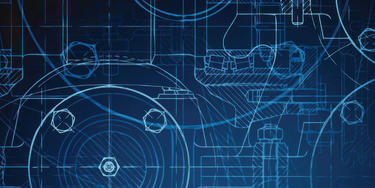
Project Input Requirements and Importance in Aerator Applications
Aerators are a fundamentally essential process in the efficient treatment of wastewater. The basic function of an aerator is to increase oxygen transfer so that beneficial bacteria can break down the pollutants in the water. The increasing world populations and demands for responsible ecological actions to safeguard our increasing water supply requirements can only emphasize the growing importance of aerators. Aerators account for the largest fraction of wastewater plant energy costs. There are many types of aerator drives and this discussion is limited to vertical, impellerdriven oxidation ditches.
This discussion would be valuable for water treatment personnel, Aerator suppliers, and power transmission suppliers wanting to supply new or replacement equipment and the importance in having accurate demand requirements to provide long-term, trouble-free operation of the mechanical components of aerator drive equipment.
Get the Right Application Information and Project Requirements for the Job
The selection of power transmission components, specifically gear reducers for use in aerator drive applications, are a mix of industry requirements, project- specific requirements, and application experience, all of which combine to generate equipment selections. These forces act together with the intention of creating equipment selections, which will operate efficiently and continuously with minimal maintenance requirements. However, one of these requirements may pull or push the equipment selection out of the optimum selection range. When the selection is out of the optimum position, the result is usually premature failure and/or increased maintenance or higher initial cost and long-term ROI. Therefore, it is critical to the end user and suppliers to provide accurate and realistic load data requirements in addition to environmental and facility requirements.
Specifications and Industry Requirements
Consultants, who often base their documents on a combination of user requirements, experience, and industry requirements, usually generate specifications. These specifications define the minimum requirements for a project. Generally, only a small portion of the entire specification refers to the power transmission equipment.
Aerator Original Equipment Manufacturers (OEMs) use these specifications to design their impeller equipment to process the wastewater-to-oxygen transfer levels prescribed for the locality, based on empirical data for water type, weather, etc. The aerator OEM will typically calculate load conditions on the impeller, using observed and test data-derived load formula. Since the impellers are more efficient at lower speeds than standard base speeds of an electric motor, a speed reducer or gearbox is required to decrease the impeller shaft speed. The gearbox manufacturer submits these shaft load conditions, along with the applicable equipment specifications, for consideration. Unfortunately, there is no one agreed-upon standard for submission of mechanical and shaft load requirements. It is vital that the aerator OEM and gearbox manufacturer are able to communicate any special or non-standard industry requirements to one another. While not often specified, it is considered an industry standard that gearbox assemblies will be outdoors and unprotected from the environment and elements. The gearbox manufacturer would have to be aware of this when making an appropriate equipment offering.